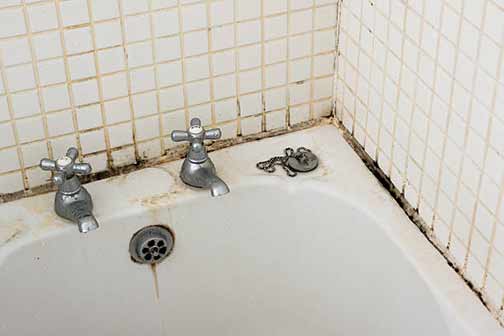Showers are the one place in your home where you are almost guaranteed to find mold. Mold grows in environments with high humidity, low sunlight penetration, mild to warm temperatures and poor air circulation. These are the exact conditions found in most showers.
The most common type of mold found in showers is black mold which usually appears as dark stains in grout lines. Mold makes your bathroom look ugly, and no amount of scrubbing with ordinary wash soap and a hard bristle brush will successfully get rid of it.
Every time you use a moldy shower, you inhale mold spores. Mold spores and toxic gases (Volatile organic compounds (VOCs)) emitted by mold, especially black mold, can cause respiratory issues or worsen existing health challenges. That’s why you need to get rid of mold in your shower.
Below are some cheap and easy DIY methods for eliminating mold from your home’s shower.
3 methods to rid your shower of ugly mold
Use hydrogen peroxide
What you need
- A spray bottle
- Hydrogen peroxide
- Hard bristle brush
- Rubber gloves
- Toothbrush
- Clean rags or towels
Most mold-killing products in the market have hydrogen peroxide in them. Instead of spending money on these specialty cleaners, use hydrogen peroxide for better results. This method is for bathrooms where the mold problem is not very bad. Note that hydrogen peroxide turns to water when exposed to sunlight; if you are using a clear spray bottle, you may want to wrap it.
Steps: Spray bathroom walls with hydrogen peroxide. Focus on grout lines since this is where most of the mold is. You might hear a hissing sound and see some foaming. Let the liquid sit for ten to thirty minutes before you wipe it with a clean wet rag. If there is still some mold left in parts of the bathroom, repeat the steps or move on to the second method.
Bleach and baking soda
What you need
- Mixing bowl
- Bleach
- Baking soda
- Face mask or respirator
- Paintbrush
- Plastic wraps
- Spray bottle
- Rubber gloves
- Old clothes
Steps: Scoop a few spoonfuls of baking soda into a bowl and add bleach. Stir the mix and add more baking soda until you get a moderately-thick paste. The mixture should be thick enough to spread easily. Spread the mix generously all over the areas where the mold is. Cover with plastic wraps to keep the bleach from evaporating (so your mixture doesn’t dry out).
Wait an hour; check to see if the mold is gone (you should be able to see this through the plastic wrap). If you see mold on shower walls, spray walls with bleach using a spray bottle. The bleach will get behind the plastic wrap and saturate the mix. Let it sit for another hour, and inspect the walls again. Remove the plastic and rinse the walls with water.
Use bleach
What you need
- Bleach
- Bowl
- Face mask or respirator
- Paper towels or cotton pads
- Spray bottle
- Rubber gloves
- Old clothes
- Plastic bucket
- Clean rags or towels
Steps: Cut the cotton pad into strips; Use them for lining the grout lines on your shower walls. You may skip this step and use paper towels. Pour some bleach into the bowl and dip cotton pads or paper towels into it until it absorbs the liquid. You may want to roll your paper towel into long strips before you do this. Next, take a towel and wipe your shower walls dry.
Paste the paper towel on the moldy areas of the shower. Ensure the paper is thoroughly wet and makes firm contact with the surface. If the paper is wet enough, it should have no problems sticking to the walls. Do this for all affected areas in the shower. Leave on the walls overnight. When you peel them off the next morning, your shower walls should be as good as new.
Preventing mold in the shower
You don’t want the mold to come back after you have gotten rid of it. The key to making sure your shower stays mold-free is to always keep it dry. Here is how you can do that;
Fix leaking faucets and showerheads
Leaks raise the humidity levels inside your shower; high humidity encourages mold growth. Fixing leaky faucets or dripping showerheads will help to solve the problem. You can also reach out to a local plumber if you need help.
Install an exhaust fan
Use an exhaust fan to get steam out of your shower as quickly as possible. Run the fan throughout your bath time and for 30 minutes after. Another option is to install a bathroom fan.
Squeegee your walls
Move all the water on the shower walls into the drain with a shower squeegee. Do this every time you finish showering. A good shower squeegee doesn’t cost more than $5 and takes less than two minutes to squeegee shower walls.
And those are our tips for getting rid of mold in your shower; you will love how your bathroom looks after you use them.

